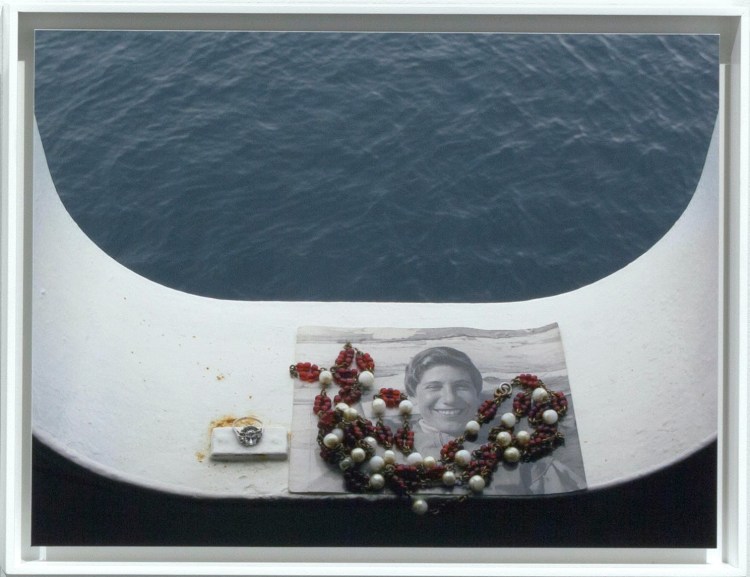
Sophie Calle, detail from North Pole / Pôle nord, 2009. © 2024 Sophie Calle / Artists Rights Society (ARS), New York / ADAGP, Paris. Courtesy of Sophie Calle and Paula Cooper Gallery, New York. Photo: Steven Probert.
For the past five decades, French conceptual artist Sophie Calle has mined her own life to provocative effect. Drawing on intimate relationships and chance encounters, Calle’s work has anticipated the personality-driven, voyeuristic nature of contemporary culture. Comprising photography, text, video, and installation work, Sophie Calle: Overshare marks the first North American survey to display the breadth and depth of Calle’s artistic career.
As a diaristic documentarian, Calle employs spycraft as a way to blur the lines between public and private life. In Suite vénitienne (1980), she followed an unsuspecting man from Paris to Venice, recording his moves in tandem with hers. In 1981’s The Hotel, she signed up as a temporary housekeeper to secretly photograph guests’ belongings. In these pieces, as in much of her work, the artist’s own projections hold as much weight as the subjects themselves.
Probing the boundaries of truth and fiction, Calle also often places herself and others in unexpected situations. For The Shadow (1981), she asked her mother to hire a private investigator to trail her. The resulting work juxtaposed the detective’s reports against the artist’s own accounts, raising pointed questions about self-narrativization and the role of viewer as co-conspirator. Later, in her auto-documentary No Sex Last Night (1992), she filmed a road trip that followed her deteriorating romantic relationship. Relying on both omission and embellishment, the project hinged upon many of the same impulses that drive social media and reality TV today.
With the artist at its center, Sophie Calle: Overshare offers an extended rumination on the paradoxes of self-disclosure, raising complicated questions about surveillance and the ethics of intrusion. Calle taps into our own prying curiosities, asking us to question our own presentations of self, alongside that of others. She wonders if we’re uncomfortable yet—and why we keep on watching.